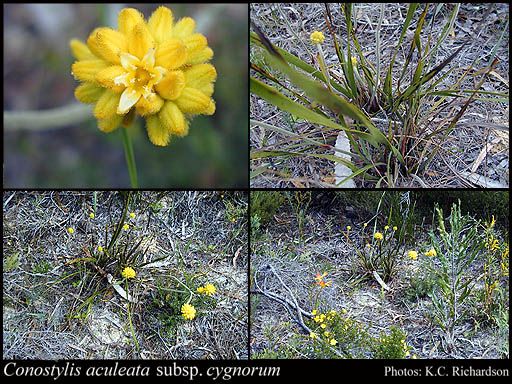- Reference
- Fl.Australia 45:457 (1987)
- Conservation Code
- Not threatened
- Naturalised Status
- Native to Western Australia
- Name Status
- Current
Rhizomatous, tufted or shortly proliferous perennial, grass-like or herb, 0.2-0.45 m high. Fl. yellow, Sep to Nov. White-grey sand, limestone.

Scientific Description
Leaves flat, 120-330 mm long, 2.5-7 mm wide; bristles or hairs on the leaf margin present, 0.6-1.5 mm long, straight and rigid, angled towards the leaf apex; hairs on the surface of the leaf absent (leaf surfaces glabrous). Scape present, hairy, 200-290 mm long. Inflorescence subtended by a bract 15-30 mm long, with several flowers; floral bracts 6.5-10 mm long; pedicels sessile; flowers 11-15 mm long. Perianth hairy, radially symmetrical, uniformly coloured, yellow, with six more or less equal tepals, the inner segments 6-10 mm long. Stamens six, in one level; filaments 1.5-1.7 mm long; anther 4-6 mm long, without an appendage. Style 8.5-10 mm long. Flowers in September, October or November. Occurs in the Swan Coastal Plain IBRA bioregion(s), of the South-west Botanical Province.
Distribution
- IBRA Regions
- Swan Coastal Plain.
- IBRA Subregions
- Perth.
- IMCRA Regions
- Central West Coast.
- Local Government Areas (LGAs)
- Bayswater, Cambridge, Canning, Claremont, Fremantle, Gingin, Joondalup, Melville, Murray, Perth, South Perth, Stirling, Swan, Vincent, Wanneroo.